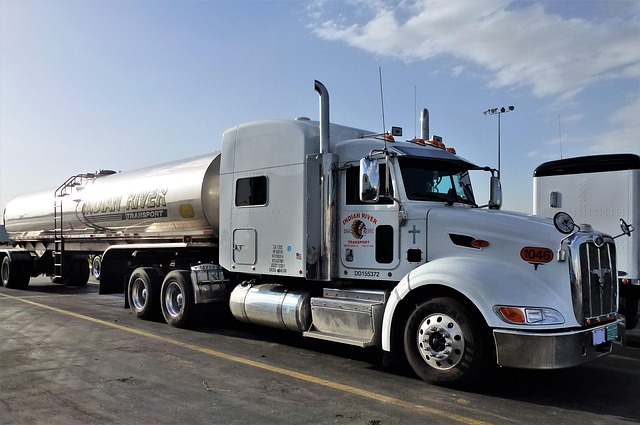Looking to register your car in California? This comprehensive guide will walk you through the entire process, from understanding key requirements to completing the application. We’ll highlight the essential documents needed and take you step-by-step through visiting the local Department of Motor Vehicles (DMV). Learn how to verify your vehicle’s VIN (Vehicle Identification Number) accurately and pay registration fees promptly.
- Understand California Car Registration Requirements
- Gather Necessary Documents for Vehicle Registration
- Visit Your Local Department of Motor Vehicles (DMV)
- Complete the Vehicle Registration Application Process
- Verify Your Vehicle's VIN and Pay Registration Fees
Understand California Car Registration Requirements

Before registering your car in California, it’s crucial to understand the state’s specific requirements for vehicle identification number (VIN) verification. The California Department of Motor Vehicles (DMV) mandates that all vehicles entering the state pass a thorough inspection to ensure they meet safety and environmental standards. This process involves verifying the VIN, which acts as a unique identifier for your car, providing critical information about its manufacture, history, and compliance with regulations.
A key component in this verification is the use of reliable tools like a mobile VIN verifier. This technology allows for convenient and accurate checks, especially when dealing with used cars or vehicles purchased out-of-state. By utilizing a mobile VIN inspection service, you can streamline the registration process, ensuring your car’s documentation is up-to-date and compliant with California’s stringent requirements.
Gather Necessary Documents for Vehicle Registration

Before you begin the registration process, it’s crucial to gather all the essential documents required by the California Department of Motor Vehicles (DMV). One vital piece is the Vehicle Identification Number (VIN) verifier, which can be obtained through a mobile VIN inspection or verification service. These services provide a convenient and efficient way to ensure your vehicle’s details are accurate and up-to-date. By using a mobile VIN verifier, you can quickly access crucial information like the vehicle’s history, specifications, and any potential issues, making the registration process smoother.
Additionally, you’ll need proof of insurance, a valid driver’s license, and the certificate of title (or bill of sale) for the vehicle. It’s also recommended to bring along any other documentation that might be relevant, such as maintenance records or previous registration documents. Having all these in order will help expedite the registration process at your local DMV office.
Visit Your Local Department of Motor Vehicles (DMV)

To start the registration process for your car in California, begin by visiting your local Department of Motor Vehicles (DMV) office. This is a crucial step where you’ll verify your vehicle’s identity and history using its unique Vehicle Identification Number (VIN). Many Californians opt for convenient services like mobile VIN verifiers to streamline this process from the comfort of their homes. A mobile VIN verifier can perform an efficient, on-site inspection, ensuring all details match with the state’s records.
At the DMV, you’ll be required to present valid identification and proof of ownership. An employee will use a VIN verifier to cross-check information against California’s database. This step is vital as it helps prevent fraud and ensures that your car meets safety and environmental standards set by the state.
Complete the Vehicle Registration Application Process

To complete the vehicle registration process in California, you’ll need to fill out a Vehicle Registration Application (Form DV-14). This form requires detailed information about your car, including its make, model, year, and unique identifying number—the VIN (Vehicle Identification Number). Ensure that the VIN is accurate; it’s crucial for verification purposes. You can obtain this critical piece of data through a mobile vin inspection or by checking the vehicle’s documents.
Once you’ve gathered all necessary details, submit your application along with the required fees to the California Department of Motor Vehicles (DMV) office in person or by mail. The DMV will then process your request, cross-referencing the provided information against their records. This verification step ensures that your vehicle meets all legal standards and is ready for registration.
Verify Your Vehicle's VIN and Pay Registration Fees

Before you begin the registration process, it’s crucial to verify your vehicle’s VIN (Vehicle Identification Number). This unique code is a critical component of your car’s identification and history. You can easily check your VIN using a mobile vin verifier or even request a free VIN report online. Ensure that the details match the vehicle you intend to register.
Once you’ve confirmed your VIN, the next step involves paying the registration fees. California has specific requirements and charges for registering vehicles, which may include a base fee and additional costs based on factors like the type of vehicle and emissions standards. You can opt for a mobile vin inspection service or pay online to streamline the process.
Registering a car in California involves understanding specific requirements, gathering essential documents, visiting your local DMV, completing an application process, and verifying your vehicle’s VIN. By adhering to these steps and ensuring all necessary fees are paid, you’ll be well on your way to legally operating your vehicle in the Golden State. Remember to always consult official resources for accurate information, as regulations can change over time.
